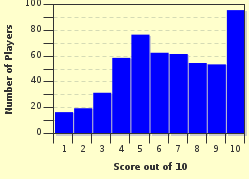Quiz Answer Key and Fun Facts
1. Two "guards" stay with the deceased immediately following death, until the time of burial. What are these guards called?
2. It is traditional to visit the family of the deceased between the time of death and the funeral.
3. In a traditional Jewish funeral, how is the deceased buried?
4. A committee of volunteers assist with washing and caring for the body. What is this committee called?
5. At the funeral, and at many occasions during the period of mourning, a prayer called the "Kaddish" is recited by mourners. What is the subject of this prayer?
6. Following the funeral, the family observe a week of mourning called "shiva", from the Hebrew word for "seven". Which of the following is NOT a tradition associated with the shiva house?
7. Public mourning continues on the Sabbath and Jewish holidays.
8. At the end of the "shiva", the family observes a tradition that symbolizes their return to normal life. What is it?
9. A less intensive period of mourning is observed following the initial "shiva". In all but one case, this period is observed for a month. For which family member is a full year of mourning observed?
10. The anniversary of the loved one's death is commemorated with a service known in Yiddish as "Yartzeit", or in Hebrew as "Hazkarah". Which of the following are part of the memorial service?
Source: Author
janetgool
This quiz was reviewed by FunTrivia editor
LeoDaVinci before going online.
Any errors found in FunTrivia content are routinely corrected through our feedback system.

